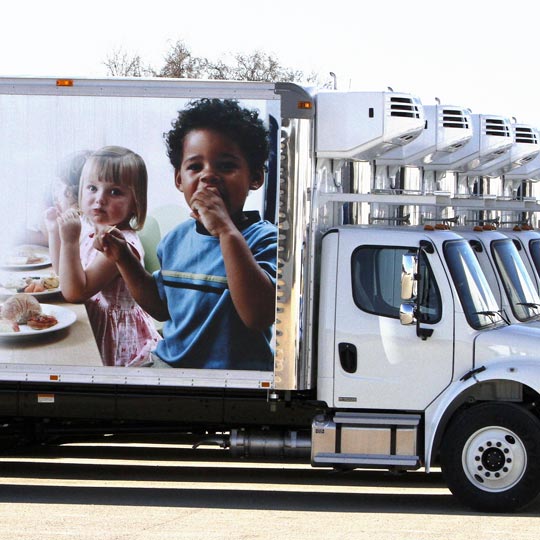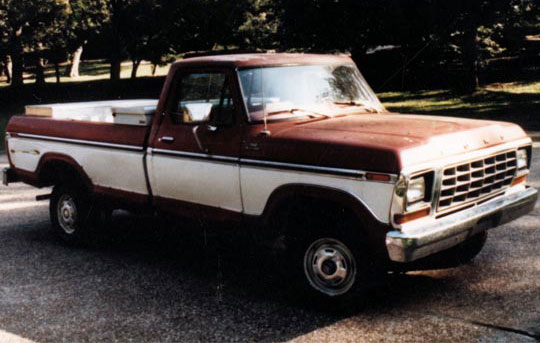Delivering Savings: The History of Walmart Transportation
Back to
Top
Walmart Transportation

Walmart Transportation: A Moving Story
After working in his Ben Franklin all day, Sam Walton would sometimes drive to Tennessee in the evenings with a homemade trailer in tow. Stuffing his car and trailer with whatever products he could get good deals on, he’d return to sell those products in his store. Although somewhat unconventional, Sam’s approach helped lay the foundation for the company’s logistics operations.
Early on, buying was much more decentralized and so were distribution efforts. Product deliveries were made by whomever could get merchandise to the stores – suppliers, contracted drivers, and even store managers on occasion. It wasn't until the combined general office and distribution center (DC) was built in 1970, that Walmart began building its own private fleet of professional truck drivers. To this day, Walmart's field transportation offices (TOs) are housed in Walmart DCs.

Walmart's first Home Office & DC #1 complex
A Fleet Dispatched with Pride
At the end of the 1980s, there were 10 TOs dedicated to Walmart's trucking operations servicing 16 DCs. Today, there are more than 70 offices servicing over 160 DCs. Every Walmart driver's uniform includes a patch unique to his/her home TO, each with a design that typically features well-known icons of the region.
The Changing Look of Walmart Trucks
Walmart’s original trucks were dark blue, with cab-over-engine tractors to pull the ever-growing number of trailers. As the Walmart logo changed over the years, trailer designs changed with it. With the founding of Sam’s Club, the wholesale club division’s logo was added to many trailers in the late 1980s through the 2000s.

Sam Walton, Drivers, and Doughnuts
According to Lee Scott, Sam Walton “would show up regularly in the drivers’ break room at 4 a.m. with a bunch of doughnuts and just sit there for a couple of hours talking to them." Since the drivers were more frank about issues in the stores, Mr. Sam’s visits with them allowed him to get a unique point of view on how the stores were faring. It was a trucker’s style cap that came to be Sam’s favorite – one that has become so iconic and representative of Sam that it’s on display at the Smithsonian’s National Museum of American History in Washington, D.C.

Sam loved visiting drivers and getting their unique perspectives on how the company was doing.
Of CEOs and Walmart Transportation
Two of Walmart’s five CEOs had their start in Transportation and Logistics: Lee Scott and Mike Duke. Lee Scott led the division from 1980 to 1995 before leading the company as CEO from 2000 to 2009. Mike Duke succeeded Scott as head of Walmart Transportation, and succeeded him again as CEO of Wal-Mart Stores, Inc. from 2009 to 2014.
Doug McMillon showed his respect for the importance of Walmart’s drivers to the company’s success by spending his first day as CEO in a ride-along in a Walmart truck.
That’s One Way to Meet Mr. Sam
In 1981, Sam Walton got into an accident with one of Walmart’s trucks. He wrote about it in his letter to Walmart World:
“It really did happen…yes, I managed to smash into the rear of one of our Walmart trucks, driven by one of our very best and safest Walmart truck drivers, Les Sparks (who had just received a 10-year Safe Driving Award)! I hasten to add that all on the scene, including myself and a very efficient Rogers’ policewoman, agreed it was 100% my fault, and I was cited. My only excuse is that, following my custom for many years, I was counting cars in a competitor’s parking lot and not looking forward to notice that Lester had applied his very excellent brakes when that stoplight changed from green to red.”

Sam once rear-ended a Walmart driver with a 10-year safe driving record. He owned up to his mistake in this issue of Walmart World.

Safety is a top priority for Walmart’s fleet. Drivers who reach safety milestones often receive special belt buckles to recognize their achievements.
Safety First: A Walmart Commitment
With over 2 million miles traveled between each preventable accident, Walmart is recognized by the industry for having one of the safest fleets in the country. In addition to being one of the safest private fleets, Walmart also has one of the largest – more than 6,000 tractors and 60,000 trailers.
Walmart achieves this exemplary record by focusing on training and incentives, keeping their well-maintained late-model fleet equipped with a variety of safety features, and empowering drivers to make the decision to “shut down” and pull over in bad weather situations whenever they don’t feel it’s safe to continue. It’s about doing things safer, not faster.
Sustainability Goal Breakers
In 2005, a goal to double fleet efficiency within 10 years led to a renewed focus on loading, routing, driving, and collaborating with tractor trailer manufacturers to improve equipment technologies. Ultimately, it also set the wheels in motion for success – a 102.2% improvement over the 2005 baseline performance levels. In 2015, the fleet moved over 1 billion more cases while driving nearly 460 million fewer miles.
Building on the company’s success of doubling its truck fleet’s efficiency between 2005 and 2015, today Walmart is working with equipment manufacturers, policymakers, utilities, transportation working groups, and other organizations to achieve its sustainability goals. To accelerate progress, Walmart Transportation is looking to meet the unique demands of its business with a portfolio of different technologies, remaining an industry leader in the efforts to reach a zero-emission future.

Next generation Walmart Advanced Vehicle Experience (WAVE) prototype concept truck used for testing technologies for improving overall fleet efficiency.












